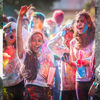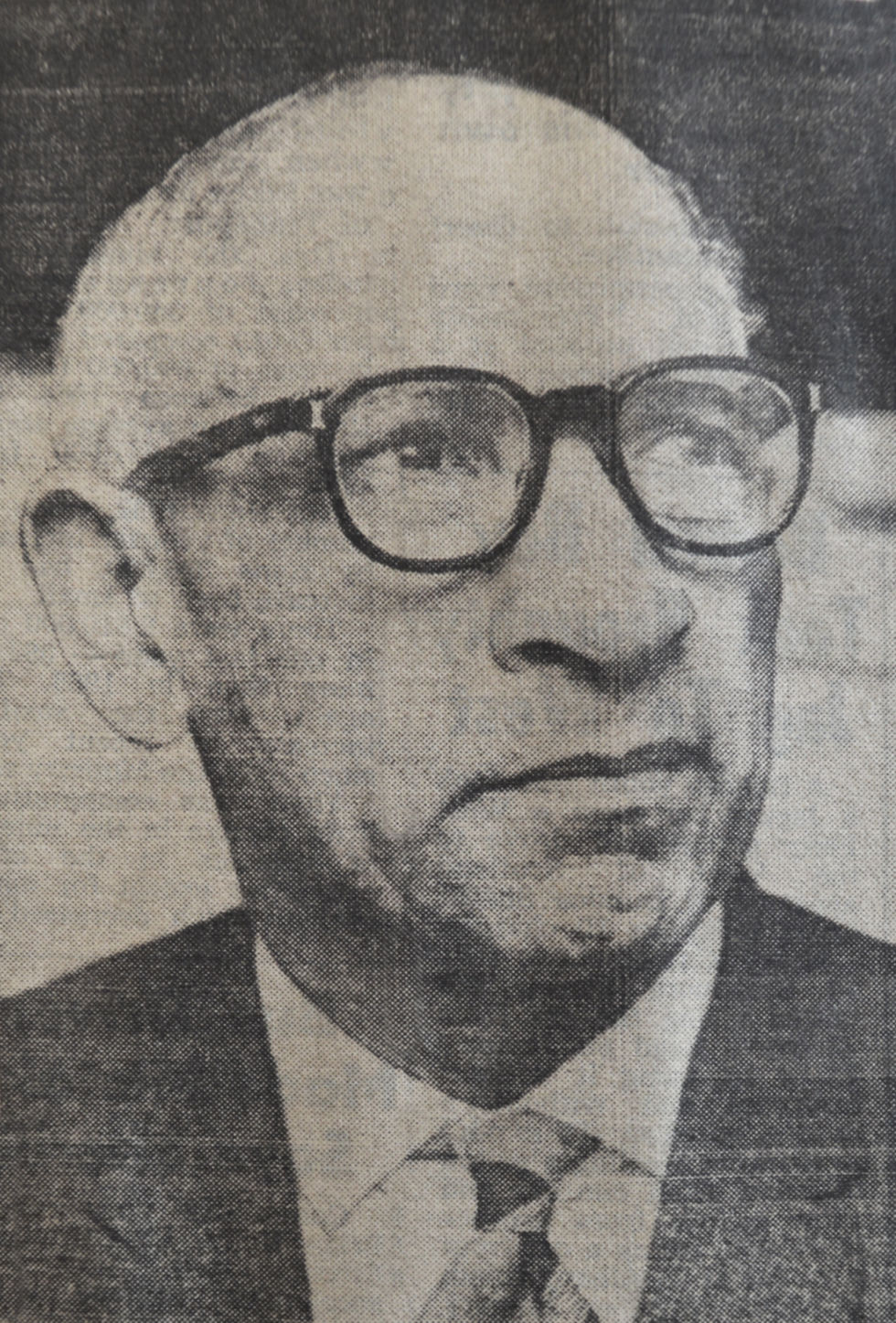“A Good Standard and Not Mere Pass Marks” – Indian Medical Students in the 1920s Part One
- woventogetherdundee

- Aug 12, 2023
- 7 min read

The 1920s saw a significant rise in the number of Indian students coming to study at Dundee’s Medical School (then part of the University of St Andrews). 23 students from India are recorded in the Matriculation Registers during this period, compared to just eight in the previous decade. Seeking to ensure that those students who were awarded places had the appropriate academic qualifications, the Faculty of Medicine agreed to accept applicants only from certain universities. In November 1926, the Faculty committee stated that the “privilege be granted only to those applicants who have passed the Indian University Examination.” They also noted that the “marks obtained” be of “a good standard and not mere pass marks.”
This “privilege” was granted to those students from “recognised” Indian universities throughout the 1920s. In 1922 there were eight such institutions – University of Calcutta, University of Madras, University of Bombay (now Mumbai), University of the Punjab, University of Allahabad, University of Lucknow, Patna University and United Provinces (India) Education Department. In other Faculty of Medicine meetings, recognition of qualifications was also granted from affiliated colleges such as King Edward College in Lahore (affiliated to the University of the Punjab), King George Medical College (University of Lucknow) and Agra College (Allahabad University). All these institutions were established in colonised India in the 19th and early 20th centuries, many around the same time as University College, Dundee (UCD), founded in 1881.
In this article we will look at the students who came to Dundee from just one of these institutions, King Edward Medical College in Lahore, Punjab (now in Pakistan). It was founded as Lahore Medical College in 1860 under the British Raj in response to the medical needs of the “expanding native army from the newly acquired territories”. Emphasising its colonial origins, the College was renamed after the late King Edward VII in 1911.
Dr Bhagwant Singh Nat matriculated in Dundee in 1919 and graduated with a Bachelors in Medicine and Surgery (MB ChB) in absentia from St Andrews in 1922. At the time he was in London sitting for a qualification to become a member of the Royal College of Surgeons. During his years living in Dundee, Nat lodged at 24 Bank Street, in rooms managed by Mrs Isabella Tulloch. He lived here for the next couple of years until moving to 8 Tay Terrace in Broughty Ferry. After graduating, Nat began research for a Doctorate of Medicine (MD) on “Artificial Pneumothorax in the treatment of Pulmonary Phthisis.” However, he changed his research in later years to “Estimation of Stature from Long Bones in Uttar Pradesh Indians.” He was awarded his MD in 1930. During this period, he enlisted in the Indian Medical Service (IMS) as a Temporary Lieutenant, becoming Major in 1936.
Dr Gurbaksh Singh Chawla matriculated in 1920 at the age of 25. He lodged at 20 Airlie Place, managed by Mrs Waters, and moved later into a room managed by Mrs Cluden at 20 Whitehall Street. A year later he moved to Nairne Villa, 60 Seafield Road. During this time, he was also keeping fit with the UCD Hockey Team and, perhaps surprisingly, became part of the Christian community. After graduating MB ChB in 1923, he was baptised at Longforgan Parish Church, in what the Dundee Courier described as: “A ceremony, probably unique in Scotland… in presence of large and interested congregation.” Dr Chawla told the Courier: “It is a thing affecting my own conscience”. He admitted “it was a big thing to break off all the old ties, but he had considered everything and made up his mind accordingly.” A year later he enlisted in the IMS as Temporary Lieutenant. He earned his MD from St Andrews in 1934 with a thesis called “Temperature of Man in Health.” During the Second World War, he was part of the commanding 18th Regiment and whilst in Singapore he was captured by Japanese forces and spent three years in a prison camp.

Dr Monowar Khan Alfridi matriculated in 1920 and lived at lodgings at 7 Airlie Terrace (now site of Dundee University Students’ Association). During his time here he joined the UCD Tennis League, along with fellow Indian student Dr Ram Parshad Sood. He graduated MB ChB in 1923. A year later he studied for a Diploma in Tropical Medicine & Hygiene from the London School of Hygiene & Tropical Medicine and worked towards completing a thesis titled “Study of the Outbreak of Cerebrospinal fever in India.” With this he graduated MD from St Andrews in 1931. Dr Alfridi also enlisted in the IMS as a Temporary Lieutenant and in 1944 he was a Lieutenant Colonel. During the Second World War he was recalled to military duty, serving in Sudan, Iraq, India and South East Asia as a malariologist, helping to prevent malaria debilitating the Allied Forces. After the Partition of India in 1947, he settled in Pakistan where he set up and organised the Malaria Institute of Pakistan.
Jodh Singh Guruwara came from Bannu in what was then known as the North West Frontier Province (also now part of Pakistan). He matriculated in 1921 and not only graduated with a Bachelor’s in 1925 but also with an LDS (Licence in Dental Surgery) with fellow countryman Yadu Nandan Lal. While he was fastidiously studying, he lodged at 60 Seafield Road and later at 12 Maryfield Terrace. Although he passed most of his exams first time, he had to re-sit his 3rd-year exam for Public Health. As busy as he was, Guruwara almost failed to graduate with the other 39 classmates due to unpaid fees for his degree. After leaving Dundee, he enlisted in the Indian Medical Services as a Temporary Lieutenant.
Karam Chand Virmani, also from Bannu, matriculated in 1921 at the age of 22. He first lodged at a house at 20 Rankine Street, then moved to lodgings at 7 Easson’s Angle. In 1925 he graduated MB ChB along with Surendra Nath Lahiri and Ajudhia Nath Nanda. Virmani had had a hard time getting to that point – he had failed most of his 2nd-year exams and then failed all of the exams for his finals. However, after two re-sits, he eventually passed. Virmani continued his medical studies when in 1934, he was awarded M.D with a thesis titled “Ascariasis” studying a type of roundworm that causing infection in the intestine through the faeces of infected people.
Ram Parshad Sood matriculated in 1921 and graduated MB ChB in 1925. He lodged at 3 Pine Terrace in Broughty Ferry where fellow student Dr Mohan Lal Ahuja also lived, then at 3 Bridge Lane, Barnhill before moving back to Broughty Ferry. As a student he was a member of the UCD Tennis club along with Monowar Khan Alfridi. Like his fellow student Jainti Dass Saggar, Dr Sood decided stay in Dundee after graduation and registered as a medical practitioner for three years. He had surgery addresses at 48 South Tay Street, 24 Forebank Road and 268 Hilltown. He continued to be an active member of Dundee society, contributing to the Socialist Party and serving as President of the Dundee Indian Association. Not much is known about this Association, but it seems to have involved early attempts to integrate with the local folk of Dundee; the Courier reported in November 1927 an evening of “songs, recitations, violin and piano solos, dances” also attended by Dr Saggar who opened the event by singing to the congregation.
Taquid Deen Ahmad from Qadian in Punjab, matriculated in 1924. He lived in lodgings at 33 Old Craigie Road then at Linden Villa at 61 Pitkerro Road. After resitting his final medicine exam, he graduated MB ChB in 1928. He then enlisted in the IMS where he was appointed Temporary Lieutenant. After returning home to Punjab, he married the daughter of a member of the Indian Civil Service. By 1940, Dr Ahmad was a Major and during the Second World War he served as Deputy Assistant Director of Medical Services for the Malaya Command.
King Edward Medical College was affiliated to the University of the Punjab, also in Lahore. It was established in 1882 by the British colonial authorities under the impetus of Sir Charles Wood, the President of the Board of Control of the British East India Company. Two students were recorded as having come from there, though as medical students they would presumably also have attended King Edward Medical College.
Jamiat Singh matriculated in 1919 at the age of 22. For about a year, he lived at the Queen’s Hotel, almost directly opposite University College Dundee. For the next couple of years, he lived at 2 Miller’s Wynd. After graduating in 1923 with a Bachelor of Medicine, he continued at the Medical School and in 1925 graduated with an MD for his thesis titled “Trachoma.” Returning to India, he settled in Simla (now Shimla, East Punjab) and became Deputy Director of Health Services. He was commended on his response to the Cholera outbreak of 1928 across Kulu Valley in the Naggar area: “visiting each and every village speedily brought the disease under control by inoculation and house to house visits.”

Another student from the University of the Punjab was Luftur Rehman Khan from Nabha. He matriculated in 1920 and during his studies, he lodged at a house on 15 South Tay Street. In 1923 he wrote to the Courier challenging an assertion they had printed that the “penalty incurred by Moslem [sic] women who become Christians is death.” Khan responded: “Though there is no doubt that most of your readers will dismiss this assertion at once as wildly improbable, yet unfortunately there are some who, on account of the fanaticism, are always prone to swallow any such pill that comes from the non-Moslem quarter... Your correspondent's statement is so sublimely wicked that it is ridiculous.” A year later in 1924, he graduated MB ChB ‘in absentia’ as by that time he was in London. Eleven years later, he earned his MD from St Andrews with a thesis titled “Indian Kala Azar”, a disease caused by a sand fly parasite that causes bouts of fever, substantial weight loss, swelling of the spleen and liver and severe anaemia.
One other notable Dundee student who had also studied at King Edward Medical College was Major General Dev Datt, whose story is told in a separate blog here.
These are all of the medical students we know of that came to Dundee from King Edward Medical College in the 1920s, but there may have been more. We would love to hear any further information anyone can shed on their lives and later careers. Part two, looking at students from the other recognised Indian universities, can be found by clicking here.
Written by Johanna Steele
SOURCES
Civil and Military Gazette (Lahore) September 1924, July 1928, December 1929
Digital.nls.uk/british-military-lists-archive
Dundee Courier 11 January 1923, 27 May 1924, 15 October 1925, 24 November 1927, 31 October 1931,
10 December 1931, 19 October 1933
Dundee Official Guide, Alex McFarlane, Simmath Press Ltd, 1927
J S G Blair, History of Medicine in St Andrews University, Scottish Academic Press, 1987
KingEdward MedicalCollege
https://www.timeshighereducation.com/world-university-rankings/king-edward-medical-university
https://www.thenews.com.pk/magazine/us/598887-an-ode-to-king-edward-medical-university
Punjab University
https://en.wikipedia.org/wiki/University_of_the_Punjab
https://www.loc.gov/item/2021666750/
Royal College of Physicians
https://history.rcplondon.ac.uk/inspiring-physicians/monowar-khan-afridi
The Indian Medical Gazette July 1926
The London Gazette 21 December 1928
The Scotsman 13 October 1924
UniversityCollege Dundee
General Medical Council Education Committee, 28 November 1922 [RU676/1/5]
Minutes of Faculty of Medicine 5 June 1919 to 16 June 1924 and 19 June 1924 to September 1939 [RU676/1/5 and RU676/1/6]
University College Dundee Matriculation Registers
Woods Dispatch
https://en.wikipedia.org/wiki/Wood’s_dispatch




Comments